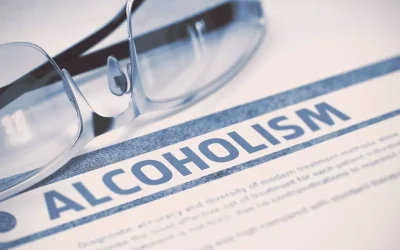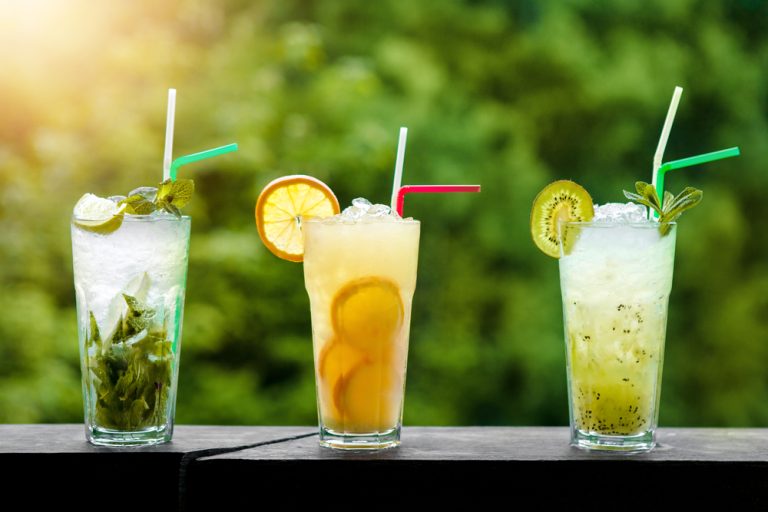Hyperactive Dopamine Response Linked to Alcoholism
In the dopaminergic pathway, one such gene is a dopamine receptor D2 (DRD2) which codes for a receptor of dopamine. Alcohol addiction and dependence of late has been shown to be affected by the influence of genes. The presence of such genes does not confirm whether a person will turn into an alcohol addict, but there is a high correlation amongst carriers of such genes and alcohol addiction. Dopamine https://ecosoberhouse.com/ is a neurotransmitter primarily involved in a circuit called the mesolimbic system, which projects from the brain’s ventral tegmental area to the nucleus accumbens. This circuit affects incentive motivation, i.e., how an organism reacts to incentive changes in the environment. Slowly over a period of time, the person craves more of the drug, to achieve the same kind of high as earlier.
- Apart from the dopamine pathways, the addiction to alcohol has also been suggested through the serotonin pathways.
- Faster response times (RT) in trials in which the target was congruent with the alcohol image versus the neutral image indicates AB toward alcohol-related cues via selective attention capture.
- Depending upon the circuit involved, the binding of these neurotransmitters may cause excitatory or inhibitory signals to be passed further along the circuit.
- Into Action Recovery Centers provides an abstinence-based program and all of our staff members have a strong understanding of the recovery process through personal experience.
- Highlighting the need for more effective and better tolerated treatments, only 362,000 (1.3%) of patients with Alcohol Use Disorder (AUD) receive treatment with a medication.
- In addition, little is known about the molecular mechanisms of craving and addiction.
Virtual mental health care visits: Making them work for you
These examples demonstrate that serotonin interacts with other neurotransmitters in several ways to promote alcohol’s intoxicating and rewarding effects. Serotonin also may interact with additional neurotransmitters that have been found to contribute to alcohol’s effects on the brain. Researchers are also investigating whether drugs that normalize dopamine levels in the brain might be effective for reducing alcohol cravings and treating alcoholism. Marco Leyton, alcohol and dopamine a professor and addiction researcher at McGill University’s Department of Psychiatry, said in a 2013 press release that participants more at risk for developing alcoholism had “an unusually large brain dopamine response” when they took a drink. Other research indicates that some people tend to have a higher release of and response to dopamine than others. In addition, those individuals may be predisposed to drink more heavily and develop an alcohol addiction.
rs.onload = function()
The positive reinforcing action of alcohol comes from the activation of the dopaminergic reward pathway in the limbic system. Dopamine is a neuromodulating compound that is released in the ventral tegmental area (VTA) and projects to the nucleus accumbens (NA) where it is acutely involved in motivation and reinforcement behaviours. Alcohol dependence is characterised by deficits in the physiological dysregulation of motivation and reward systems, such as those in the limbic system, hippocampus, amygdala, caudate nucleus, frontal lobe and nucleus accumbens. The detailed necropsy procedures used to harvest tissues [28] and obtain ex vivo slices [8] have been previously described. A block containing the caudate and putamen was microdissected from the left hemisphere and sectioned with a VT1200S (Leica, Buffalo Grove, IL) in a sucrose cutting solution aerated with 95% O2/5% CO2 (see Supplementary Materials for composition). A ceramic blade (Camden Instruments Limited, Lafayette, IN) was used for sectioning 250 µm slices that were equilibrated at 33 °C for 1 h in equilibration ACSF before being moved to room temperature for an additional hour before beginning experiments.
How alcohol affects hydration
In the nucleus of neurons, alcohol has complex effects on the epigenetic regulation of gene expression. These complex and highly interlinked pathways activate specific gene expression programs, which underlie neuronal maladaptations and contribute to the development of alcohol use disorder. Dopamine is a neuromodulator that is used by neurons in several brain regions involved in motivation and reinforcement, most importantly the nucleus accumbens (NAc). Dopamine alters the sensitivity of its target neurons to other neurotransmitters, particularly glutamate.
Dopamine Production and Distribution in the Brain

Even with alcohol’s effect on dopamine production, you don’t have to continue drinking. Rehab programs will help break the cycle through detox and therapy — either one-on-one or group sessions. We hear many different things about how alcohol affects the brain and body, most notably that it is a depressant. Alcohol is a depressant, but it’s also an indirect stimulant, and plays a few other roles that might surprise you.
- At the highest level of complexity are neural pathways, sequences of neurons communicating through several brain regions (Shepherd 1994).
- 2Generally, alcohol exposure for more than 1 day is considered chronic, because this time period exceeds the usual duration of a single session of drinking and intoxication.
- Interestingly, rapid antidepressants require coordinated actions of Fmrp and mTORC1 [50], raising the possibility that such coordination may also be relevant in the context of alcohol’s actions.
- The most basic level of complexity is the arrangement of connections (i.e., synapses) between individual neurons.
- Scientists have long sought the mechanisms by which alcohol acts on the brain to modify behavior.
4N-methyl-d-aspartate, or NMDA, is a chemical that specifically activates this glutamate-receptor subtype. 3Glutamate is the major excitatory neurotransmitter; that is, glutamate stimulates the signal-receiving cell. 2Autonomic, or visceral, responses regulate the involuntary bodily functions, such as heart rate, blood pressure, and gastrointestinal activity. Parkinson’s disease and certain metabolic disorders, for instance, can deplete dopamine. However, other factors, such as a person’s hydration levels, can also affect how often they urinate.
The five most addictive substances on Earth – and what they do to your brain – The Conversation
The five most addictive substances on Earth – and what they do to your brain.
Posted: Wed, 02 Mar 2016 08:00:00 GMT [source]
function lazyLoadRecaptcha()
Such efforts are hampered by inadequate funding, so collaborative efforts on a national scale, combining the skills and infrastructures of different hospitals and psychiatric care centers could potentially overcome this problem. In the study, 165 AD patients, 113 heroin dependent patients and 420 healthy controls from a homogeneous Spanish Caucasian population were genotyped using standard methods. The study found that genotypic frequencies of STin2 VNTR polymorphism did not differ significantly across the three groups. The study concludes by stating that their data does not support a role of serotonergic polymorphisms in AD. Despite its positive correlation, some studies have produced contradictory results. A study conducted by[39] to assess the association of Taq1A polymorphism and AD in south Indian population yielded negative results.[40,41] also did not find any association with Taq1A polymorphism and AD amongst Mexican-Americans.
Effects of Chronic Alcohol Exposure on Serotonergic Synaptic Transmission
Multiple slices per subject were sometimes used with no more than two slices per subject/brain region included in any experiment. CFEs were calibrated post hoc against a solution of 1 µM dopamine dissolved in voltammetry ACSF. Researchers currently are trying to determine whether alcoholics with abnormal serotonin metabolite levels have specific variations in the gene that codes for the enzyme tryptophan hydroxylase, which produces serotonin from other molecules in the cells. Several variants of the tryptophan hydroxylase gene exist; one variant appears to be particularly common in alcoholics with histories of aggression and suicidal tendencies (Virkkunen et al. 1995).





